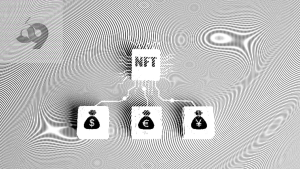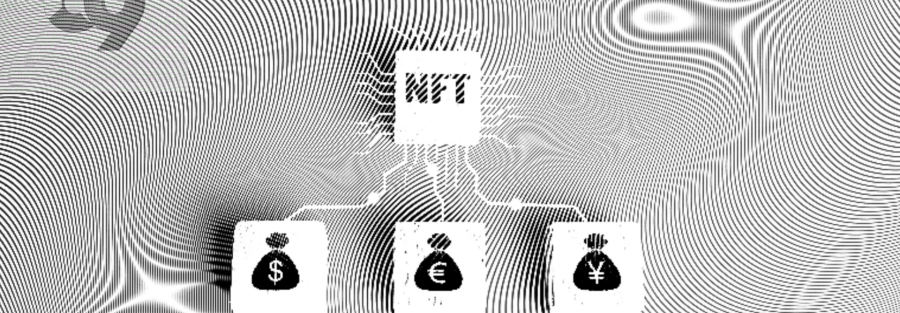NFTs?! What does that even mean? Whether you like it or not, you’ve heard of it before, but you’ve never really understood what it’s about. If you hadn’t found this article, you’d be somewhere now struggling to understand the tech jargon used in explaining NFTs. In this article, we will break down every important feature of the technology, what are music NFTs, its potential benefits and negative effects on the music industry, how to set up music NFTs and NFT marketplaces. Let’s dive in.

What are NFTs?
NFT in full means non-fungible token. It’s a unique digital item that works with Blockchain technology. Let me explain that. Think of Blockchain as a safe box— the iron cast type with a password—that cannot be tampered with or broken into. This box can hold anything; art, money, music, pdfs, tickets. And whatever you place in this box is considered a token that is securely deposited. Fungible tokens are interchangeable tokens. That is, for example, you can change ₦1000 for five ₦200 notes. Bitcoin, Dogecoin or Ethereum are examples of fungible tokens.
Contrarily, a non-fungible token is anything that is not interchangeable placed in that safe. Think of digital art, painting, even real art. There is usually only one original painting made by an artist, and no copy made can be exactly like it. No matter how hard you try, there’s only one original Monalisa painting. You can sample Fela’s song, but there’s only one original Fela Kuti, you get? That’s like NFTs too.
Basically, something is non-fungible if it is clearly unique, cannot be replaced by another thing just like it and is scarce. NFTs can be digital files such as Jpegs, MP3s, videos, GIFs and more. And they can only be one of each of them because they have a unique code embedded in them. Although it can be sold, buyers need to have a certificate of authenticity. That way, the files are still kind of tied to the original owner.
Note: Payments for NFTs are made in cryptocurrency, the most popular of which is Ethereum.
While they’ve been around since 2014, 2021 was the first year that this new technology became popular. According to reports, total NFT sales hit $25 billion in 2021, compared to $94.9 million the year before. As you would guess, lots of celebrities and big companies across different industries— music, art, sports, and more—have explored the world of NFTs.
How secure is the Blockchain?
Remember we described Blockchain as “a safe box— the iron cast type with password—that cannot be tampered with or broken into.” That’s to show how secure it is.
But here’s how Blockchain works. Each time a new transaction occurs, a new secure block is created that carries timestamps of transactions and who and what has been exchanged. Everyone on the Blockchain sees the chain of transactions that goes on there because it’s a publicly accessible ledger. This makes the chain secure such that to hack it, one would have to tamper with every single block on the chain which means altering all information on the ledger that millions of people have.
So, this has the potential to change how musicians earn money. As an artist, if you create an NFT, you’ll see the list of all the buyers and earn money through direct sales to fans without waiting on an agent. Amazing, yeah?
Let’s now get into Music and NFT…
What are music NFTs?
NFTs in the music industry can come in various forms, such as audio files or videos, sales for concerts (virtual & physical), backstage passes, lyrics, an album cover, signed merchandise and more. Music can even be combined with digital art in jpeg or gif formats to create unique pieces of artwork with music incorporated. Any of these forms can be recorded on a Blockchain as a non-fungible token that belongs exclusively to the owner.
You probably heard about “HeadsByBuju” launched earlier this year. It’s a project by BNXN (formerly known as BUJU), the first Nigerian artist to create an NFT. This project consists of 10,001 unique NFTs of his face. Holders of these NFTs would get access to physical and virtual concerts hosted by BNXN, merch items, and a part of the revenue the musician makes from specific music projects. While some experts believe that Nigerians aren’t ready for NFTs because of the awareness level, this is a move in a great direction. We’ve seen so many musicians outside Nigeria invest in NFTs, and digital artists within Nigeria too successfully create NFTs. Also, we’re starting to see more activities in that line from Mavins and more recently, Pheelz. Recently, Don Jazzy announced how he made a whopping 300 thousand dollars?! in 10 minutes from NFT.
Why should you look into Music NFTs?
Copyright issues, building fanbases, exploitation, no royalties. These are some of the challenges that musicians all over the world face when it comes to the production and distribution of their music. Music NFTs have great potential to solve these problems for good.
As we’ve earlier said, NFTs are unique digital assets. Once an NFT is created, it cannot be altered or duplicated. Hence, unlike Mp3s that you download on your mobile and share without the artists knowing, music NFTs can be bought and sold but the original owner still knows and earns royalties for every secondary market sale. This solves the copyright issue facing musicians, especially in Nigeria.
You know, when you buy tracks on iTunes or subscribe to Spotify, you only have the right to listen to those tracks on the platform. You don’t own those songs. Contrarily, music NFTs let anyone listen to the track and at the same time own them through an NFT.
If you think about it, it sounds funny. Why would anyone buy something they can already listen to? Well, it’s simple. People value things that are unique, exclusive and original. It’s like buying stuff from Icebox or buying a limited edition Nike. There’s nothing exactly special. You just like to own something most people don’t. Also, buying music NFT) shows a great relationship with an artist— bragging rights for any fan. Also, it’s an investment in an artist that you believe will blow. As the value of such NFT increases, there’s a chance of a higher return on investment.
Data from 2019 and 2020 shows that 90% of streams go to the top 1% of artists. This means most musicians struggle to find an audience. More frustrating is that those who find the audience get only a little fraction of the royalty from their streams— labels and agents don collect finish. With NFTs, musicians can monetize their fan base in brand new ways and cut out a whole lot of the industry’s middlemen. You can easily track your art, receive money from resales, and sell directly to the market.
So how can you create an NFT?
Check out 7 Simple Steps to Setting Up Music NFTs
Advantages of Music NFTs:
- New Revenue Source: music NFTs offer a potential new stream of income for artists, especially indie artists, and it allows the fans to directly support the musicians they love.
- Protection of Copyright: With music NFTs, musicians can be rest assured that their projects cannot be pirated. Also, artists can successfully and in a more secure process, transfer ownership of intellectual property like songs within seconds.
- Protection from scams and hidden fees: for a long time, indie artists have faced the problems of hidden fees, middleman charges, inefficiency and counterfeits. NFTs make scamming almost impossible, allowing for more transparent transfers of funds and ownership of products and verification within seconds.
Disadvantages of Music NFTs:
- Expensive: NFTs can be expensive to mint or sell, especially for emerging artists. This is because the market thrives on hype and popularity. However, when you understand the NFT marketplace and build the right fanbase, you’ll be able to succeed with music NFTs.
- Scarcity: NFTs create a problem of scarcity that may exclude many of your fans due to the high prices of tokens such as tickets. Especially in countries where the economy is growing like Nigeria. Therefore, you’ll have to devise ways to make all your fans feel inclusive. This may include creating non-digital versions of those products after initial sale.
In Conclusion…
Yes, NFT is still very new and there is lots of skepticism surrounding it in this part of the world. However, innovation doesn’t come without skepticism. Just look at cryptocurrency. Many regretted that they didn’t invest when it started. So, you’ll agree with us that the future holds well for music NFTs. As the technology continues to grow there are lots of life-changing potentials that come with it. Our advice to you is to become one of the early adopters of NFTs before it’s too late.
Goodluck, champ.


